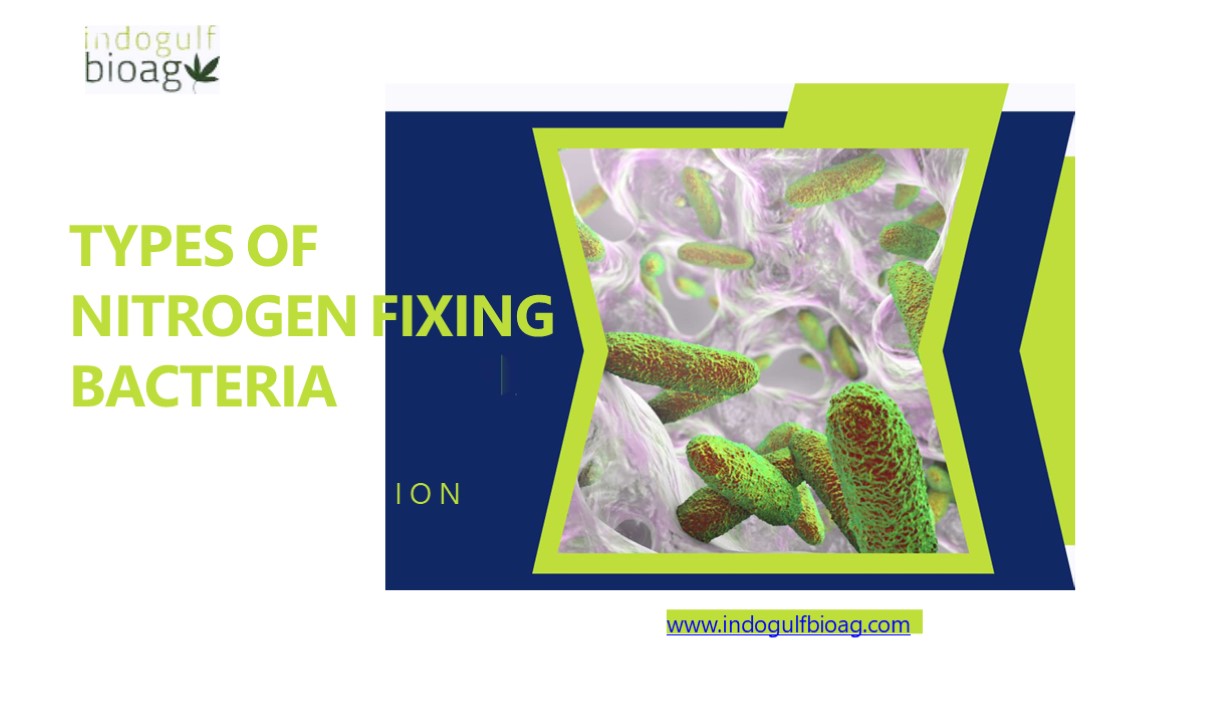The World of Nitrogen-Fixing Microbes PowerPoint PPT Presentation
Title: The World of Nitrogen-Fixing Microbes
1
TYPES OF NITROGEN FIXING BACTERIA
I O N
www.indogulfbioag.com
2
nitrogen
INTRODUCTION Welcome to our presentation on
Nitrogen Fixing Bacteria! Nitrogen is an
essential element for life on Earth, and
nitrogen-fixing bacteria play a crucial role in
making it available to plants. Let's dive
into the world of these remarkable microorganisms.
7
3
bioagV
THE NITROGEN CYCLE
The nitrogen cycle is the continuous process of
nitrogen changing its form and moving through the
environment.
Nitrogen gas (N2) makes up about 78 of Earth's
atmosphere but is unusable by most living
organisms.
Nitrogen needs to be "fixed" or converted into a
usable form, such as ammonia (NH3) or nitrate
(N03-), for plants to absorb.
4
(No Transcript)
5
TYPES OF NITROGEN FIXING BACTERIA Nitrogen-fixing
bacteria are categorized into two main types
symbiotic and free-living.
6
SYMBIOTIC NITROGEN FIXING BACTERIA
7
f Q 0 C7 U ! bioag
These bacteria form mutually beneficial
relationships with plants, primarily legumes
(e.g., soybeans, clover, and peanuts). Rhizobia
are the most well-known symbiotic nitrogen fixers.
01 02
They live in nodules on the plant's roots and
convert atmospheric nitrogen into ammonia, which
the plant can use.
8
FREE-LIVING NITROGEN FIXING BACTERIA
01 r i These bacteria are not dependent on a specific plant host.
03 r Azotobacter and Clostridium are examples of free-living nitrogen fixers.
02 r They inhabit the soil and aquatic environments.
04 r i They convert nitrogen gas into ammonia, enriching the soil and making nitrogen available to plants.
9
111 u u k u 11 bioaggtk
THE NITROGEN FIXATION PROCESS Nitrogen
fixation is a complex biochemical process that
involves converting atmospheric nitrogen into
ammonia. Nitrogenase enzymes are responsible
for this conversion. These enzymes are
extremely sensitive to oxygen and work in
low-oxygen conditions.
10
bioagV
IMPORTANCE OF NITROGEN FIXING BACTERIA
Nitrogen is a key component of amino acids,
proteins, and DNA, vital for plant growth.
Nitrogen fixation reduces the need for synthetic
fertilizers, which can harm the environment.
These bacteria enhance soil fertility and crop
yields, contributing to sustainable agriculture.
11
YES, ITS
THAT
TANT
12
AGRICULTURAL APPLICATIONS
13
bioag
Farmers use nitrogen-fixing crops like legumes in
crop rotation to replenish soil nitrogen
levels. Inoculants containing nitrogen-fixing
bacteria are applied to seeds before p
anting. This reduces the need for synthetic
nitrogen fertilizers, lowering production costs.
01 02
03
14
They help maintain a balance in ecosystems by
ensuring a steady supply of nitrogen to plants
and other organisms.
ENVIRONMENTAL IMPACT
Nitrogen-fixing bacteria play a role in reducing
nitrate pollution in water bodies.
15
CONCLUSION
Nitrogen-fixing bacteria are essential for
maintaining the nitrogen cycle and supporting
life on Earth. Their symbiotic and
free-living forms make nitrogen accessible to
plants, contributing to food security and
environmental sustainability.
16
bioag
THANK YOU
FOR YOUR ATTENTION
Let's open the floor to questions and discussions.
1437774 3831 0 www.indogulfbioag.com

